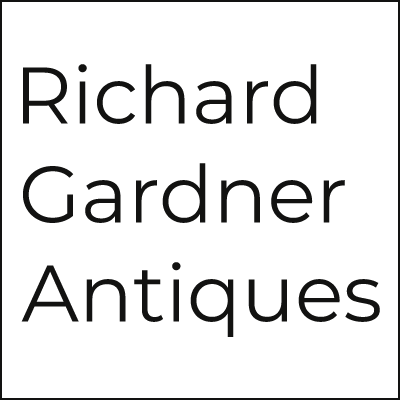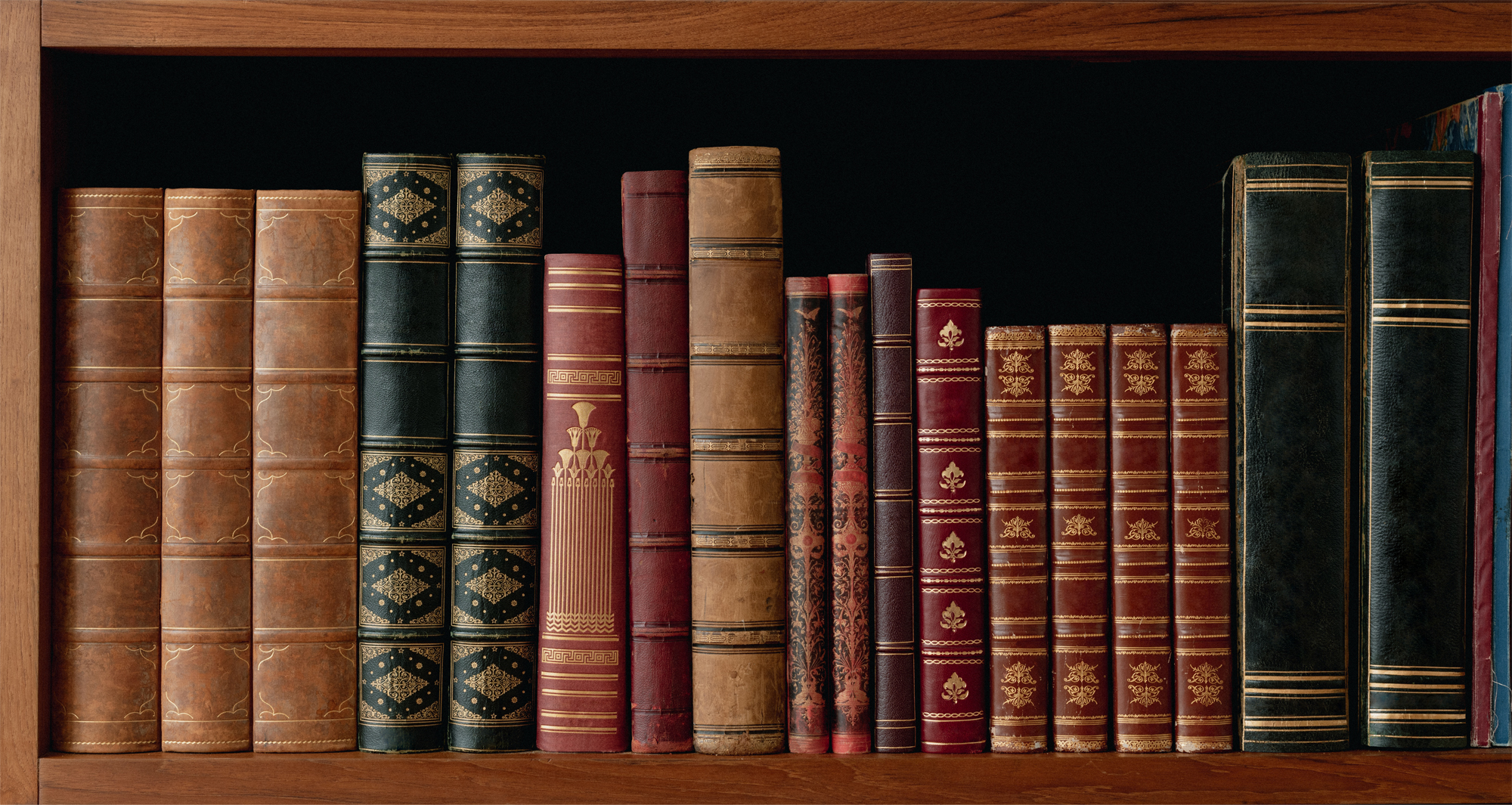Antique Sailor Woolwork Pictures Or Woolies
19TH CENTURY SAILOR WOOLWORK PICTURES, OTHERWISE KNOWN AS WOOLIES
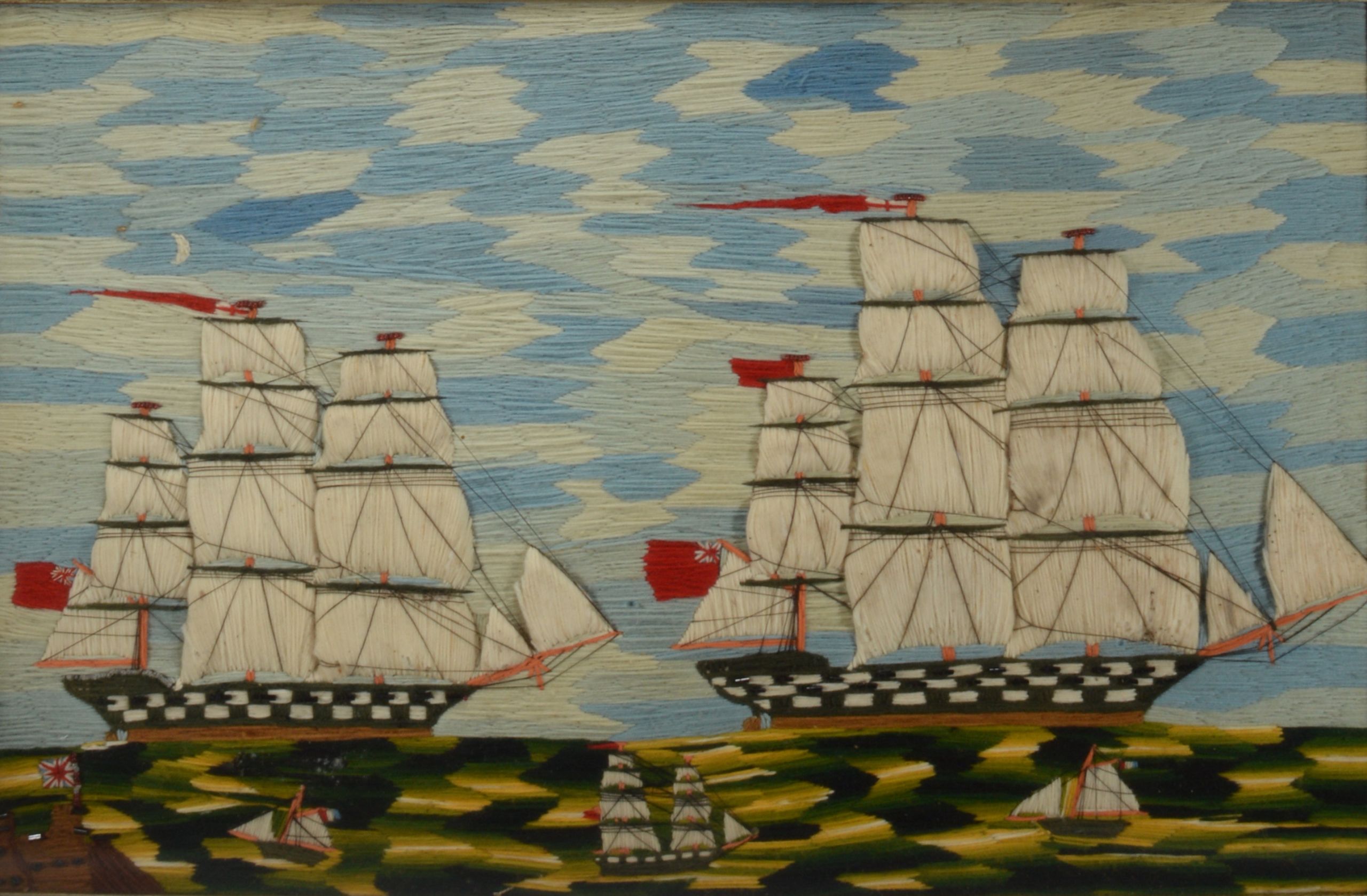 Embroidered ship portraits are among the most charming and least known of the maritime arts. Thought to have originated in Great Britain around 1840, they reached their greatest popularity between 1860 and 1880. Interest in stitching these likenesses waned with the passing of the great sailing ships and the introduction of photography.
Embroidered ship portraits are among the most charming and least known of the maritime arts. Thought to have originated in Great Britain around 1840, they reached their greatest popularity between 1860 and 1880. Interest in stitching these likenesses waned with the passing of the great sailing ships and the introduction of photography.
Ship embroideries and usually unsigned and their makers unidentified. Some say that they were made by sailors during long voyages at sea; however, it is likely that many were made on land. The production of ship portraits in various media was a thriving business in major ports. Even though sailors were adept needleworkers, it is quite possible that some portraits were stitched for seaman by artisans familiar with the sea.
The portraits depict naval warships, merchant vessels or private yachts. They are generally shown broadside, boasting their distinctive features before the wind, with full sails and oversize flags unfurled for legibility. Coastal scenes, nautical guideposts such as lighthouses, beacons and buoys, and other ships are sometimes included. Many embroideries are embellished with flags of important maritime nations or ports, royal emblems, heraldic symbols, coat of arms, photographs, flowers and allegoric figures. In some embroideries, the ships are framed by elaborately stitched portholes or open stage curtains.
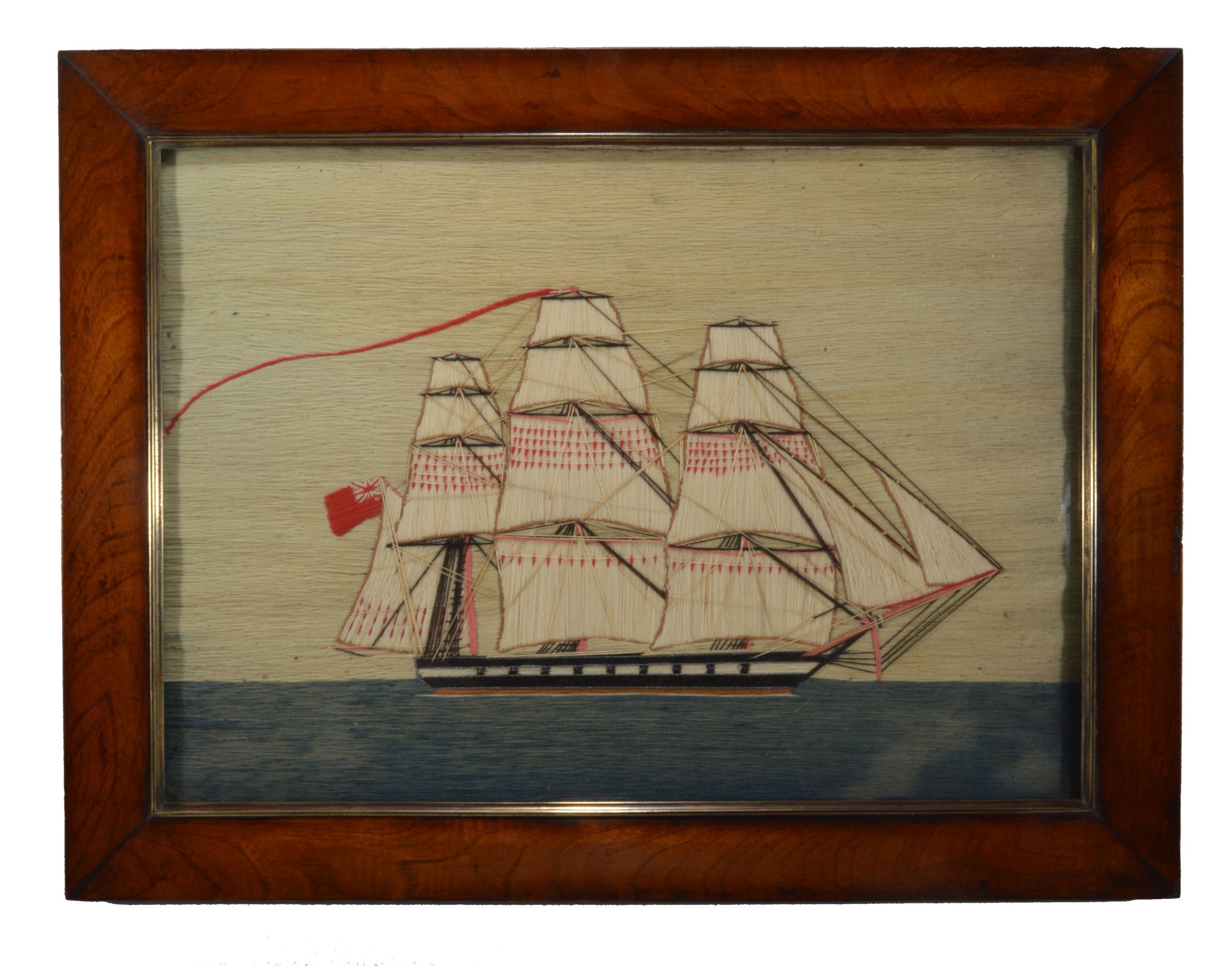 Ships that appear in wool portraits are difficult to identify. Even those with names are subject to confusion by the custom of changing names in the Royal Navy and the repetition of names in the merchant service. Flags and pennants are important elements in providing information: nationality or ownership in the case of a merchant ship, yacht club affiliation, and sometimes name and place of origin, function and type, as well as rank of the commanding officer. A ship dressed with flags and pennants generally announced a special occasion, such as the visit of a dignitary; a long streamer indicated that a ship was on her way home. Clues to identify can be found in the rigging, the shape of the hull, number of decks and guns, the location of the ship (though backgrounds are known to have been substituted) or the association of the ship with a specific event.
Ships that appear in wool portraits are difficult to identify. Even those with names are subject to confusion by the custom of changing names in the Royal Navy and the repetition of names in the merchant service. Flags and pennants are important elements in providing information: nationality or ownership in the case of a merchant ship, yacht club affiliation, and sometimes name and place of origin, function and type, as well as rank of the commanding officer. A ship dressed with flags and pennants generally announced a special occasion, such as the visit of a dignitary; a long streamer indicated that a ship was on her way home. Clues to identify can be found in the rigging, the shape of the hull, number of decks and guns, the location of the ship (though backgrounds are known to have been substituted) or the association of the ship with a specific event.
The portraits were worked on plain-weave cotton or linen cloth in now-faded wools coloured with natural or synthetic dyes, the latter being used almost exclusively after 1850. The most commonly applied stitches were the long and short, surface satin and stem stitches. The chain stitch was used in earlier works as well. The masts were generally made with long floating stitches. Sails were sometimes padded and the riggings were usually made of linen or cotton threads. The depictions of sky and sea show considerable individuality and variation.
Intended as a remembrance of a particular vessel or port, this delightful folk art is a happy reminder of the days of the great sailing ships.
